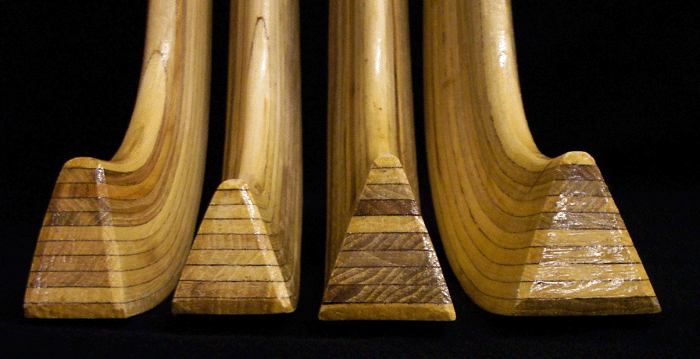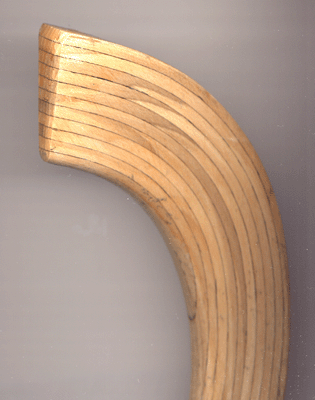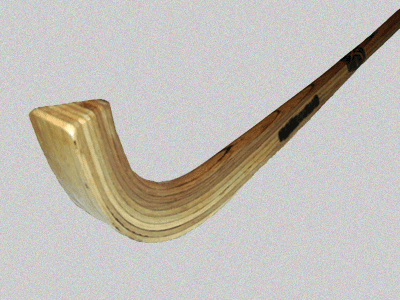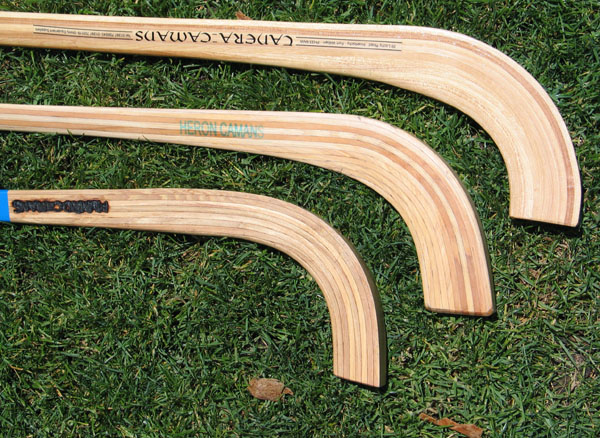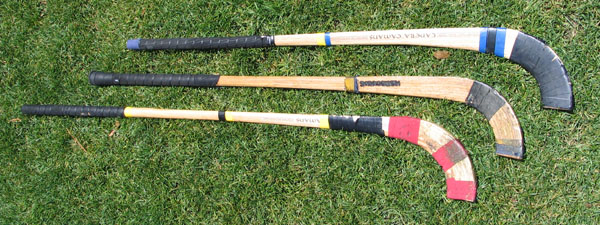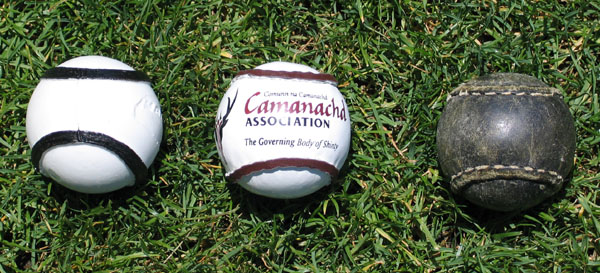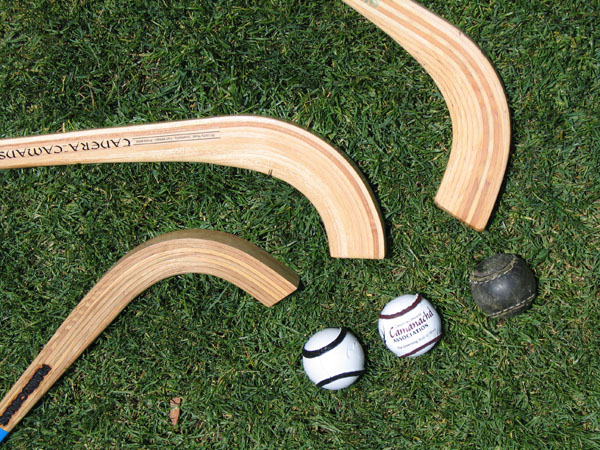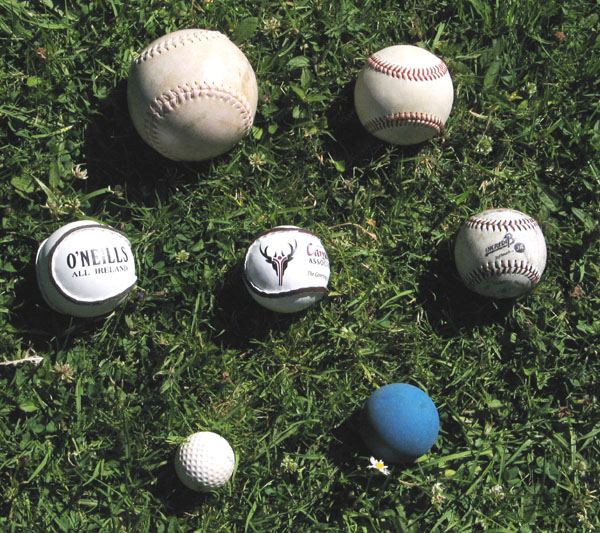











PHOTOS OF BASIC SHINTY EQUIPMENT
A list of sources for Shinty equipment may be found on the Camanachd Association website here, at this point all camans and balls come from Scotland. For further information contact US Camanachd directly, find link near top of the list at left.
The four styles of caman or shinty stick: (from left to right) forward, midfield, defender, goalie (or keeper). The angle of the bevel effects the arc of the ball, forward sticks have the least angle so that shots will not go over the goal, goalies and defenders have the most angle to lift the ball over attackers while clearing the defensive zone.
Close-up of a forward's stick the relatively flat angle allows forwards to keep the ball lower, an advantage for goal scoring even with 10 foot high nets.
This is a midfield stick. The base is wider than the forward stick, resulting in the head being more angled. This provides more lift to shots.
Three camans from three different makers: (from top to bottom) a Tanera forward, a Heron forward, and a Munro midfield. Note the differences in the curve and toe angle.
Here are three camans fresh from a match, all forwards or mid-forwards. Note the variations in taping and the use of tennis or golf type grips. The bottom caman (taped in red) was used by Gary Innes playing for Fort William in the Scottish Premier League.
Three types of shinty balls: (left to right) a plasticized practice ball, a leather match ball, and a rare "Tighnabruaich" match ball.
The balls with camans, you get a snese of the relative sizes.
For comparison, here you see a shinty ball (at center) alongside some other balls: (clockwise starting at left) a sliotair (hurling), an American softball, a baseball, a PeeWee league safety ball (8" version), a handball, and a golf ball.
[MRB0606]
